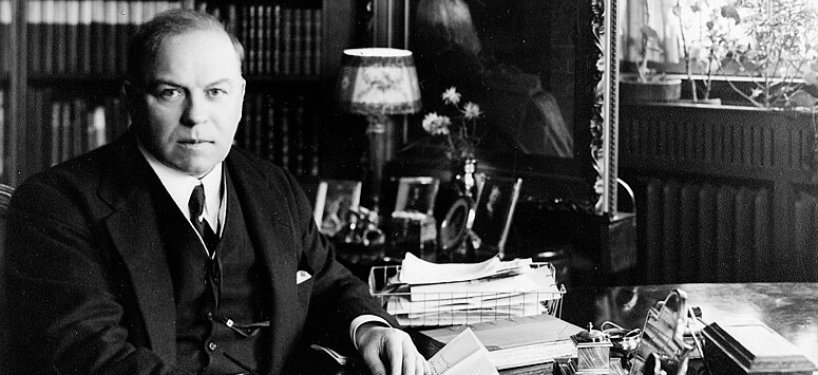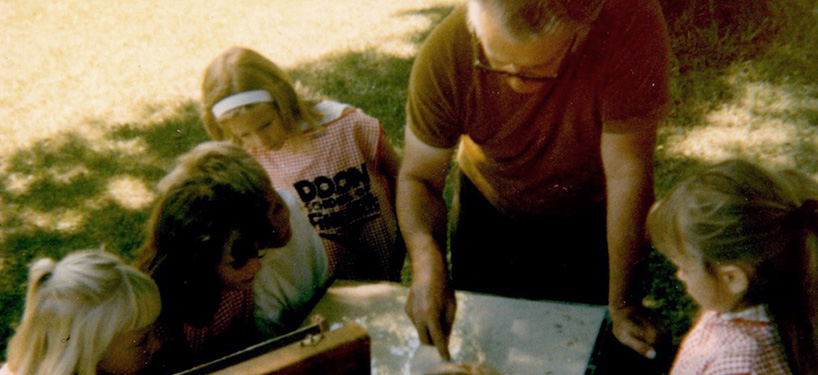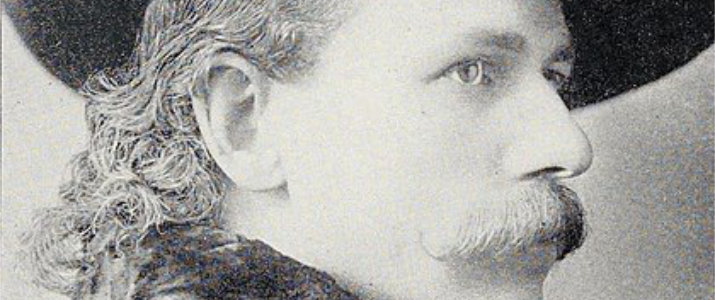Throughout his career, Homer Watson met and was in contact with many notable figures. One of which was Oscar Wilde, the famous playwright and author of The Picture of Dorian Gray (1891). Wilde was also famously tried and sentenced for homosexual acts in 1895.[1] Wilde’s legacy and memory has been stewarded by the LGBTQ+ community, as demonstrated by his inclusion in the Rainbow Honor Walk in San Francisco.[2]
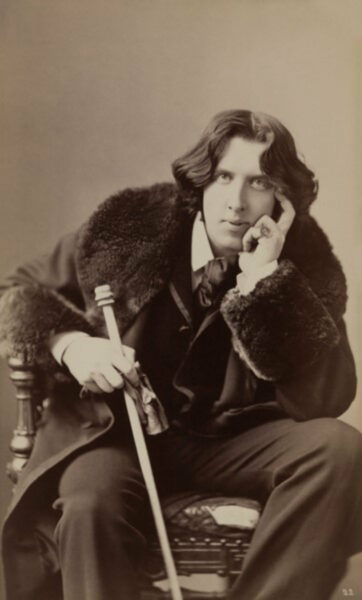
While in Toronto in 1882, Oscar Wilde was at the Ontario Society of Artists exhibition observing artwork when he saw Watson’s Flitting Shadows. Enamoured with the style of painting, Wilde exclaimed that the artist was the “Canadian Constable” and that “he [had] the exact manner of the modern French artists”.[3]
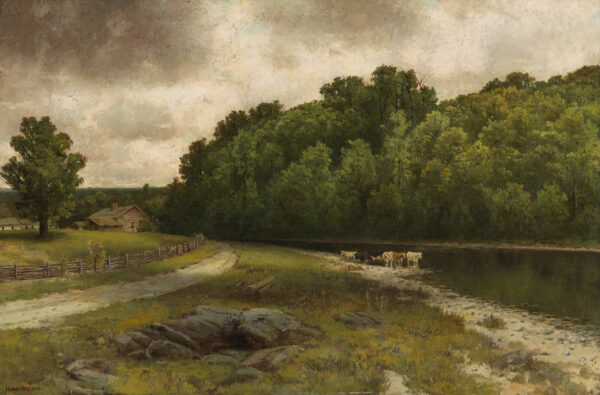
In identifying Watson as the “Canadian Constable,” Wilde referred to the English landscape painter John Constable. Constable’s style of painting was similar to the French school of painting called Barbizon. Watson had not seen a Constable painting to this point in his life and found the comparison comical. Later, upon seeing Constable’s The Lock, Watson was inspired to “paint a subject Constable would have delighted to paint”.[4] This inspiration became one of Watson’s famous works, The Flood Gate.[5]
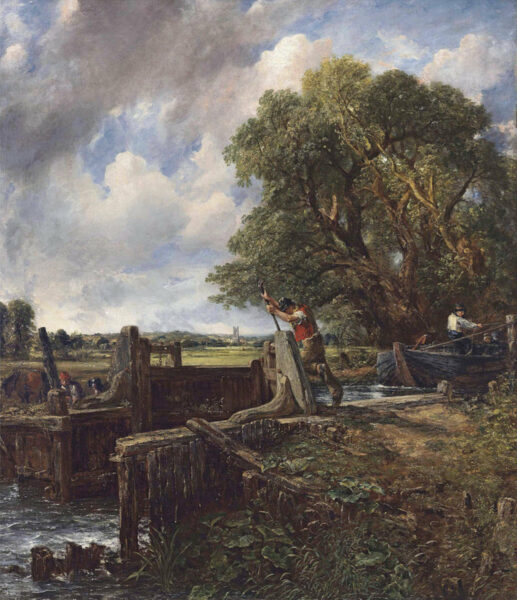
Wilde had a painting commissioned by Watson and wrote him with great enthusiasm upon the arrival of the painting in 1888:
My Dear Mr. Watson,
The picture has finally arrived, and I have much pleasure in telling you how pleased I am with it: it is quite what I desired from your hand, in tone and technique and feeling; the treatment of the sheep is excellent – and the whole sense of rain and wind entirely free and delightful… I hope… most of all to have some day the pleasure of personally knowing one whose work gives me such great artistic pleasure.
Believe me,
Truly,
Oscar Wilde[6]
The painting Watson completed for Wilde was lost in 1895 when his belongings were sold. It is, however, believed that the painting was completed in January 1888 while the Watsons were in Scotland.[7]
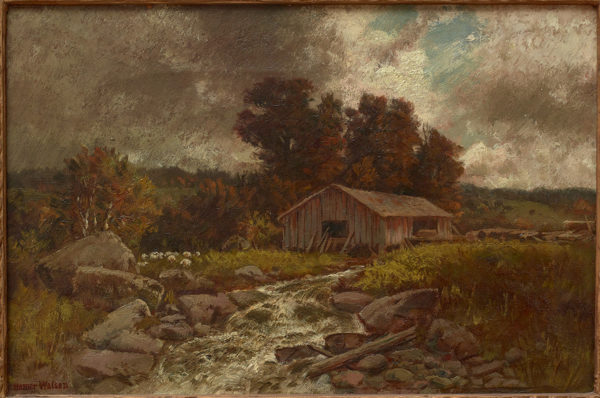
Oscar Wilde’s encouragement of and friendship with Homer Watson contributed to the recognition of Watson’s artwork on the international stage. The relationship between the two artists also appears to have helped Watson become more comfortable and confident during his time in Europe.
Wilde’s praise “gave Watson’s career another boost”[8] and their friendship led to Watson’s entrance to the New English Art Club.[9]
Bibliography
- Muriel Miller, Homer Watson: The Man of Doon (Toronto: Summerhill Press, 1988)
- Karl Beckson, “Oscar Wilde,” Britannica, last modified 30 April 2024, https://www.britannica.com/biography/Oscar-Wilde
- Dita Amory, “The Barbizon School: French Painters of Nature,” in Heilbrunn Timeline of Art History (New York: The Metropolitan Museum of Art, March 2007), https://www.metmuseum.org/toah/hd/bfpn/hd_bfpn.htm
- Kevin O’Brien, Oscar Wilde in Canada: An Apostle of the Arts (Toronto: Personal Library, 1982)
- Brian Foss, “Oscar Wilde and the ‘Canadian Constable’,” Homer Watson Life & Work, https://www.aci-iac.ca/art-books/homer-watson/biography/#Oscar_Wilde_and_%E2%80%9CThe_Canadian_Constable%E2%80%9D
- See also https://www.aci-iac.ca/art-books/homer-watson/style-and-technique/ Brian Foss “John Constable and Barbizon Painting”
[1] Karl Beckson, “Oscar Wilde,” Britannica, last modified 30 April 2024, https://www.britannica.com/biography/Oscar-Wilde.
[2] “Honorees,” Rainbow Honor Walk, http://rainbowhonorwalk.org/?page_id=950
[3] Muriel Miller, Homer Watson: The Man of Doon (Toronto: Summerhill Press, 1988), 47; Kevin O’Brien, Oscar Wilde in Canada: An Apostle of the Arts (Toronto: Personal Library, 1982), 103.
[4] Homer Watson to Arthur Lismer, September 30, c.1930, in Homer Watson, R.C.A 1855-1936: Paintings and Drawings (Ottawa: The National Gallery of Canada, 1963), 34.
[5] Ibid.
[6] Miller, Homer Watson, 48.
[7] O’Brien, Oscar Wilde in Canada, 104.
[8] Brian Foss, “Oscar Wilde and the ‘Canadian Constable’,” Homer Watson Life & Work, https://www.aci-iac.ca/art-books/homer-watson/biography/#Oscar_Wilde_and_%E2%80%9CThe_Canadian_Constable%E2%80%9D
[9] O’Brien, Oscar Wilde in Canada, 104.

